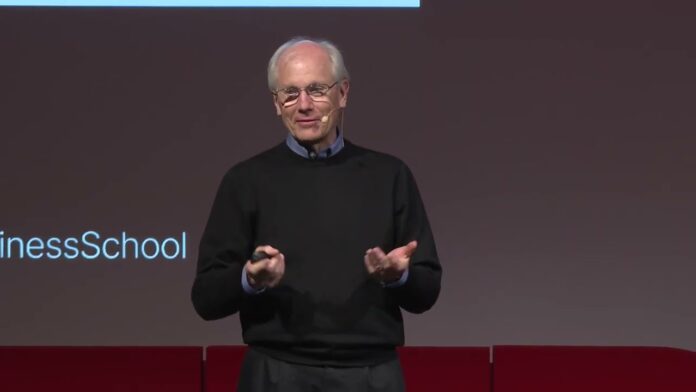Architecture has long been an integral part of human civilization, serving as a reflection of the values, beliefs, and cultural identity of a society. From the grand cathedrals of Europe to the intricate urban landscapes of Asia, the built environment has the power to shape and define the identity of a place and its people. In this blog post, we will explore the intricate relationship between architecture and identity, examining both historical and modern examples of how architecture has been used to express and reinforce the unique character of a community.
The relationship between architecture and identity
The built environment as a reflection of cultural values
Architecture is not merely a functional tool for shelter and utility; it is a powerful medium through which a society can express its core values, beliefs, and traditions. The design of buildings, public spaces, and urban layouts often reflects the cultural priorities and aesthetic sensibilities of the people who create them. From the ornate, symbolism-laden cathedrals of the Middle Ages to the stark, modernist structures of the 20th century, the built environment serves as a visual representation of a society’s spiritual, intellectual, and artistic aspirations.
The role of architecture in shaping identity
In addition to reflecting cultural values, architecture can also actively shape the identity of a place and its inhabitants. The design of buildings, public spaces, and infrastructure can influence the way people perceive and interact with their environment, ultimately contributing to a sense of belonging and community. The arrangement of streets, the scale of buildings, the use of local materials, and the integration of natural elements can all play a role in creating a distinct “sense of place” that is intrinsically tied to the identity of a city or region.
The political and social implications of architecture
Architecture is not only a reflection of cultural identity but also a tool for political and social expression. Historically, many authoritarian regimes have used the built environment to project power, wealth, and ideological dominance, often at the expense of local cultural traditions. Conversely, grassroots movements have also employed architecture as a means of resistance, using innovative design and community-based planning to challenge dominant power structures and assert the identity of marginalized groups.
Historical examples of architecture shaping identity

Ancient civilizations and the construction of identity
Throughout history, the construction of monumental architectural structures has been a key way for ancient civilizations to establish and reinforce their cultural identity. From the towering pyramids of Egypt to the imposing temples of Mesopotamia, these grand structures served as symbols of political and religious power, cementing the authority of ruling elites and shaping the collective identity of the people.
The role of religious architecture in medieval Europe
In medieval Europe, the construction of cathedrals and churches played a crucial role in the development of regional and national identities. These awe-inspiring structures, with their intricate Gothic designs and lavish ornamentation, were not only places of worship but also centers of cultural and intellectual life, serving as visible reminders of the power and influence of the Catholic Church.
The influence of colonial architecture on identity
The legacy of colonialism has had a significant impact on the architectural identity of many regions around the world. The imposition of European architectural styles, such as neoclassicism and baroque, on colonized territories often served to undermine local cultural traditions and assert the dominance of the colonial power. However, in some cases, the blending of colonial and indigenous architectural elements gave rise to unique hybrid styles that reflected the complexity of the colonial experience.
Modern examples of architecture shaping identity

The rise of modern architectural movements and their impact on identity
The 20th century witnessed the emergence of several influential architectural movements, each of which had a profound impact on the way cities and communities expressed their cultural identity. From the functionalist principles of the International Style to the regionalist approach of the Brutalist movement, these architectural trends shaped the built environment in ways that both reflected and challenged the dominant social and political ideologies of the time.
The role of iconic buildings in defining the identity of cities
In the contemporary era, the construction of iconic, visually striking buildings has become a common strategy for cities seeking to establish a distinctive identity on the global stage. From the Sydney Opera House to the Guggenheim Museum in Bilbao, these architectural landmarks have the power to redefine the public’s perception of a place, attracting tourists and investment and contributing to a renewed sense of civic pride and belonging.
The influence of sustainable and community-based design on identity
In recent decades, there has been a growing emphasis on the importance of sustainable and community-based approaches to architectural design. These principles, which prioritize the integration of buildings with their local environment and the active engagement of community members in the design process, have the potential to foster a stronger sense of identity and attachment to the built environment.
Case studies
The Alhambra and the expression of Moorish identity in Spain
The Alhambra, a sprawling palace and fortress complex in Granada, Spain, stands as a striking example of how architecture can be used to express and preserve the cultural identity of a marginalized group. Built during the Nasrid dynasty’s rule in the 13th and 14th centuries, the Alhambra’s intricate, geometric designs and use of water features reflect the aesthetic sensibilities and engineering prowess of the Moorish civilization, which had been subjugated by the Catholic Reconquista.
Table: Key features of the Alhambra’s architecture
| Feature | Description |
|---|---|
| Decorative tiles | Elaborate, intricate patterns using a variety of colors and materials |
| Arches and columns | Characteristic Moorish architectural elements, often with decorative motifs |
| Courtyards and fountains | Integrated use of water to create a serene, contemplative atmosphere |
| Geometric designs | Repetitive, symmetrical patterns that evoke the mathematical sophistication of Moorish culture |
The Alhambra’s preservation and restoration, as well as its designation as a UNESCO World Heritage site, have helped to ensure the ongoing recognition and celebration of Moorish cultural identity within the broader context of Spanish history.
The Bolshoi Theatre and the expression of Soviet identity in Russia
The Bolshoi Theatre in Moscow, Russia, serves as a powerful symbol of the Soviet Union’s political and cultural identity. Constructed in the early 19th century, the Bolshoi underwent a significant renovation in the 1950s, during the height of the Soviet era. The building’s neoclassical facade and grand, opulent interior were designed to project an image of the Soviet regime as a cultural and intellectual powerhouse, capable of rivaling the artistic achievements of the West.
Unordered list: Key features of the Bolshoi Theatre’s architecture
- Neoclassical facade with columns, pediments, and other classical elements
- Lavish, ornate interior with gilded decorations, chandeliers, and plush seating
- Large, imposing scale that reflects the Soviet Union’s ambitions for cultural dominance
- Careful attention to acoustics and lighting to create an immersive, theatrical experience
- Prominence of the building within the larger urban landscape, symbolizing the centrality of the arts in Soviet society
The Bolshoi Theatre’s enduring legacy as a symbol of Soviet identity has been complicated by the collapse of the USSR and the ongoing process of cultural and political transformation in Russia. However, the building’s continued prominence and the reverence with which it is regarded by many Russians underscores the enduring power of architecture to shape and define a society’s collective identity.
Conclusion
In conclusion, the relationship between architecture and identity is a complex and multifaceted one, with deep historical roots and ongoing relevance in the modern world. From the grand, monumental structures of ancient civilizations to the innovative, community-driven designs of the 21st century, the built environment has been a powerful tool for expressing and shaping the cultural, political, and social identity of communities around the globe.
As we continue to grapple with the challenges of urbanization, globalization, and climate change, the role of architecture in reflecting and reinforcing our collective sense of identity will only become more crucial. By understanding the ways in which the built environment can shape our perceptions, experiences, and attachments to place, we can work towards the creation of more inclusive, sustainable, and culturally-responsive cities and communities that truly reflect the unique identity and aspirations of the people who inhabit them.








